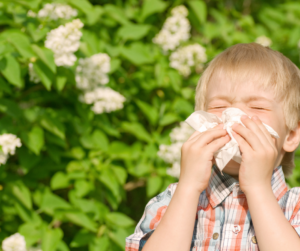 By Kathy Hubbard
By Kathy Hubbard
Some statistics are surprising. Well, at least to me, they are. For instance, 25 million Americans have allergic asthma, while 24 million Americans have hay fever, rhinitis, or nasal allergies. I would have thought those numbers would be the other way around, but apparently, those of us with runny noses take a back seat to those who cough.
“The same allergens that give some people sneezing fits and watery eyes can cause an asthma attack in others,” Webmd.com says. “Allergic asthma is the most common type of asthma. About 90 percent of kids with childhood asthma have allergies, compared with about 50 percent of adults with asthma.”
It’s all about your immune system. Its job is to protect you from bacteria and viruses. But, if you have allergies, your immune system is attacking otherwise harmless substances like cat dander or pollen.
“When your body meets an allergen, it makes chemicals called IgE antibodies. They cause the release of chemicals like histamine, which causes swelling and inflammation,” WebMD says.
Symptoms are a result of your body trying to remove the allergen. It’s that simple. What isn’t always simple is identifying the triggers. Common allergens are cockroaches, dust mites, mold, pets, and pollen.
Asthma and Allergy Foundation of America says that cockroaches are found all over the world. I’ll tell you that North Idaho isn’t an exception. They say that feces, saliva, and body parts can produce allergic reactions.
Dust mites are spider-like creatures that you can’t see with the naked eye. They thrive on human skin flakes and are found on soft surfaces like mattresses, pillows, carpets, stuffed toys, etc.
You probably know that it’s fairly common to be allergic to mold. It can grow on anything indoors and outdoors where moisture is present. “Molds produce tiny spores, which are like seeds, to reproduce. These spores become airborne easily,” AAFA says.
We all know that pet urine, feces, saliva, hair, or dander (skin flakes) are allergens. But what we might not think about is that you don’t have to have a pet in your house or take a visit to Petco to be exposed.
“Animal allergens are often detected in places where no animals live,” AAFA says. “People who own or have been around animals may have carried the allergens into the place.”
Last but certainly not least for me, at any rate, is pollen. Pollen from trees, grasses, and weeds can peak in the spring, summer and fall, but they can linger in your house and particularly your air ducts year-round.
Besides allergens, irritants can also cause allergic reactions. WebMD identifies these triggers as smoke from tobacco, a fireplace, candles, incense, or fireworks; air pollution; cold air; strong chemical odors; perfumes, air fresheners, or other scented products; and dusty rooms.
You can be tested to find out what you’re allergic to. You’ll want to consult with your primary care provider. And, there are medications available both by prescription and over-the-counter to alleviate allergic asthma and hay fever symptoms.
One of the things you can do to avoid allergens is to stay inside when the pollen count is high. Keep the windows closed, and if you have one, use the air conditioner with a clean air filter. To avoid dust mites, wash your sheets and other bedding once a week in hot water. If you can, remove wall-to-wall carpeting and keep your house as dust-free as possible.
Sad, but true, there aren’t any hypo-allergenic cats or dogs. If you find you’re allergic to your animals, you should at least keep them out of your bedroom. Webmd says that dust or sprays claiming to reduce pet allergens haven’t been proven effective.
If you see cockroaches, contact a pest control company. Keep your kitchen and bathroom clean and dry. Run the exhaust fans when you cook and when you shower. And, finally, be careful when working outdoors.
“Gardening and raking can stir up pollens and mold. Wear a HEPA filter mask while outside to reduce the amount of pollen and mold particles that get into your lungs,” WebMD says.
Allergic asthma and hay fever can’t be cured. But, the symptoms can be controlled. That’s something to sneeze at.
Kathy Hubbard is a member of the Bonner General Health Foundation Advisory Council. She can be reached at [email protected].

